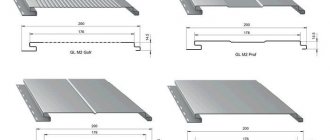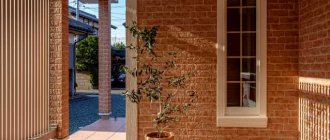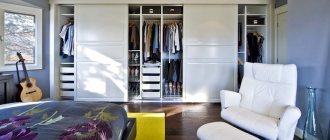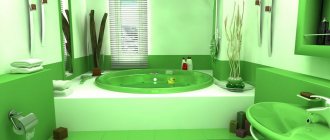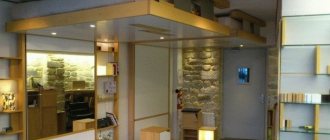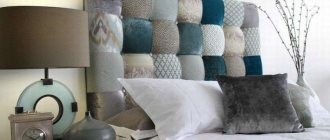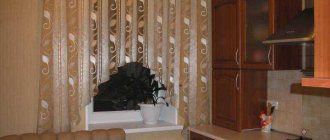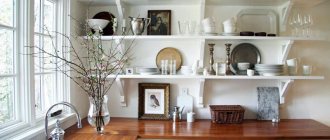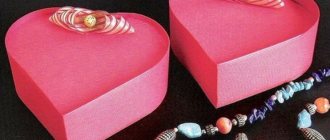Metal siding is a popular building material used for cladding the walls of a house both outside and inside. At the same time, due to its small width and weight, it is excellent for particularly complex structures where there are a large number of windows and doorways.
Therefore, this type of siding is perfectly installed even in particularly hard-to-reach places. Installing siding under a stone with your own hands is not a very difficult task if done correctly.
Stone siding
This siding is truly a high-quality imitation of natural stone. Buildings lined with stone are distinguished by their exquisite appearance and majesty. This material gives them a certain “classicity”, and it is absolutely not necessary that it be a luxurious villa with several floors, stylized as a castle. Even an ordinary house, lined with stone, acquires unique sublime features. And the price of such coverage simply cannot but rejoice.
Stone siding
Stone siding is one of the types of basement siding.
The facade panels imitate wooden cladding materials, and the basement panels imitate stone (or brick). Basement types of siding have significant differences from facade siding in panel shape, thickness, etc.
At the same time, they are quite suitable for covering the entire area of the walls , and the stone siding we are considering is in many ways superior to ordinary material in creating the appearance of the house.
High-quality imitation of natural stone makes it possible to completely transform a house, giving it solidity and special respectability, characteristic of ancient buildings.
The panels imitate masonry made from large boulders, flat slabs, white rubble stone, etc. Externally, the panels are panels of medium width; on the sides they are cut along the joint lines of the masonry fragments.
Compared to conventional facade panels, they are more convenient to use, fit perfectly, and have higher strength.
Photo of a house with stone siding:
There are various types of stone siding:
- Metal.
- Vinyl.
- Acrylic.
- Fiber cement.
In addition, there are many varieties of color and texture of the simulated surface :
- Canyon.
- Granite.
- Rubble stone.
- The stone is rocky.
- Burnt stone, etc.
There are a lot of options for the color and texture of stone, and new developments are constantly appearing, providing additional possibilities for finishing the house.
The expressiveness and high artistic value of stone are fully conveyed in siding panels, which are not so easy to distinguish from natural stonework.
NOTE!
Stone siding is also quite suitable for interior decoration, which makes it a universal finishing material.
Royal Stone facade panels
Royal Stone plinth panels are produced at a large siding manufacturing plant in Russia. A series of basement siding is produced - under a rocky stone, the " Rocky Stone" collection. The material completely imitates the natural textures and shades of natural stone, which is perfect for classic architectural styles.
The realism of the natural stone texture is striking in its accuracy
The panels are great not only for finishing the basement, but also the entire house as a whole
Pros and cons of stone siding
As a facing material, stone siding has many pros and cons.
Without touching on the specific properties of the material from which this or that panel is made, we can highlight the following positive qualities :
- Many options for panel design, color or masonry texture.
- High precision simulation, full effect of a stone building.
- The smaller size of the panels makes installation easier and makes it possible to work alone.
- High quality of joining; there is no need for H-bars, which are necessary for the longitudinal connection of facade panels.
- Does not require maintenance (maximum: sometimes spray it with water from a hose to wash off the dust).
- The durability of the panels is comparable to the service life of the house itself.
The disadvantages of stone siding include:
- The large thickness of the panels creates an increased load on the walls.
- The strength of the cladding, while apparently indestructible, is still inferior to natural stone. Handle the cladding carefully, remembering that repairing or replacing one panel may require disassembling the entire façade.
The main and indisputable advantage of stone siding is the exquisite appearance of a finished house , the ability to create the appearance of an ancient or modern building using the same technology.
Wood pulp
In this case, wood shavings and special chemical fillers - resins - are pressed under high pressure at high temperatures.
The main feature is low cost, excellent appearance and the ability to make a ventilated façade of the building. However, such panels are short-lived.
Kinds
Manufacturers use the following materials to produce stone siding:
Metal
Made of galvanized steel with a polymer protective coating.
The stamped relief, repeating the texture of various types of masonry, is covered with several protective and decorative layers, resulting in a panel with a very authentically made surface.
The material is somewhat thicker than ordinary metal siding, which increases the overall weight of the skin, but the strength of the fabric is much higher, the reliability of such skin is very high . At the same time, stone-look metal siding is almost twice as expensive as vinyl samples.
Vinyl
Vinyl siding is lightweight, which reduces the load on the supporting structures of the house . This makes it possible to finish buildings with a large wall area without overloading them with additional elements.
In addition, the specificity of plastic provides ample opportunities for high-quality imitation of the texture of stone with maximum accuracy and reliability.
The shapes for plastic panels are copied from natural masonry , and the properties of the plastic make it possible to make the surface as close as possible to natural granite, sandstone or marble.
One of the weaknesses of vinyl siding is its relatively low strength and fragility in cold weather , which requires careful handling of the skin.
In addition, vinyl expands quite strongly when heated, so this feature must be taken into account during installation.
Acrylic
Acrylic stone siding has almost the same characteristics as vinyl siding , although the production technology is different. The material is more resistant to heat and is neutral to a number of chemicals. Slightly more expensive than vinyl.
Fiber cement
Fiber cement siding is a new product in the Russian market, although it has been used in the West for a long time. The material is extremely durable, resistant to atmospheric and mechanical stress .
Information about it is quite scarce, but we can definitely say that it is very heavy (1 sq. m. weighs about 15 kg, a fully paneled house will receive an additional load of several tons), the thickness of the panels is 10 mm.
In addition, such material is very expensive - the cost of fiber cement panels exceeds even the most expensive wooden samples . Such qualities significantly reduce the interest of homeowners, although manufacturers claim the unsurpassed properties of the material.
IMPORTANT!
When choosing a material, you should familiarize yourself with its characteristics, since the constant search for new, more durable and reliable types of cladding brings improved types of siding to the market, often without the disadvantages of earlier models.
Ceramic siding
New to the siding market are products made from ceramics. This building material is inexpensive combined with high quality.
Decorating a house with ceramic siding
The raw material for making products is clay. Some models allow additional natural additives. The panels have the following advantageous characteristics:
- hypoallergenic;
- health safety;
- environmental friendliness;
- aesthetic and attractive appearance;
- low cost.
Installation of ceramic siding
Siding looks impressive on the facades of buildings of any style. He is not afraid of the influence of the natural environment.
Ceramic siding is completely environmentally friendly
Its appearance resembles ceramic tiles, which makes the building stylish and presentable, the cladding of which is made of ceramic products. Thanks to this quality, it is often used for finishing luxury country cottages.
Ceramic siding looks presentable
Choosing the best stone siding
Which siding to choose?
It is difficult to name any type of siding as unambiguously the best.
You can limit the range of materials under consideration to the two most common - metal and vinyl , but the final choice should still be based on the specific conditions of the area, the size and material of the building, the design concept and other considerations, the totality of which will help make the final choice.
Metal siding is strength, reliability and durability, while vinyl siding is light, has a high level of imitation of stone walls, and is easy to install.
One way or another, the final choice of the most suitable material is dictated by one’s own conditions and financial capabilities, so without accurate data nothing concrete can be recommended.
If the house is tall, with a large wall area, then it is wiser to turn to vinyl samples, since the total load from metal panels may be close to critical.
For small walls made of durable materials - concrete, brick, reinforced concrete slabs - you can use any cladding material, including fiber cement panels.
Fiber cement
The manufacturing technology consists of pressing cellulose with cement mortar. The advantages of this material are fire safety, high strength, temperature stability and durability, but the high price, heavy weight and small range of colors make it not very common.
As mentioned above, the most common option, which accounts for about half of all siding, is plastic.
How to decorate the façade of your home to earn the respect of your neighborsBrick sauna stoves - a source of heat and a beautiful design solution
Manufacturing and installation of a metal sauna stove in-house
Let us dwell on it in more detail, since the likelihood that you will decide to decorate your house with siding yourself using vinyl panels, according to statistics, is about fifty percent.
Installation nuances
The technique for installing siding under stone is similar to installing other types of material and includes all the same operations :
- Preparing the walls. The condition of the wall is inspected and assessed. Detected problem areas (cracks, dents) must be sealed with putty; in especially severe cases, leveling plaster can be used.
- Installation of sheathing. One or two layers of sheathing are installed on the prepared wall surface, depending on the presence of insulation. In any case, the load-bearing layer is vertical, and the layer under the insulation is horizontal. The material can be used wooden blocks or metal guides for gypsum boards.
- Wall insulation , waterproofing . The insulation is installed between the strips of the first layer of sheathing. There should be no gaps or cracks; if they do appear, they should be filled immediately with polyurethane foam. The installed insulation must be waterproofed from the penetration of water from the outside, for which a layer of waterproof membrane is installed , which acts in one direction - releasing steam from the wall cake, but not letting in moisture. The film should be laid in overlapping layers, and the joints should be taped.
- Installation of counter-lattice . A load-bearing system of planks—a counter-lattice—is installed on top of the waterproofing. It has a vertical orientation of the slats, provides a ventilation gap and is used for installing siding panels.
- Installation of starting strip, corners and window frames. The first step in installing siding. The starting bar is installed in the bottom selected line, always horizontally. Immediately after this, corner strips are installed and window openings are formed . Installation of H-planks is not necessary; in this case, basement types of siding are superior to façade sidings.
- Installation of panels . After all the preparatory operations, you can install the panels. Installation is carried out from the corner, for which the outer panel is cut along a straight vertical line and installed in the corner profile . Then the next panel is attached along the installation line and so on in order. The next row of panels can be installed staggered so that the connecting lines of the panels in the rows are in different places, for which you need to cut off about half from the first panel of the row.
CAREFULLY!
During installation work, do not screw in the screws all the way and tightly install the siding parts end-to-end or into the sockets of additional elements. The temperature gap must be taken into account, all parts must have some mobility. This point is especially important when installing vinyl types of siding.
Advantages and disadvantages
Regardless of the material of manufacture, the advantages of “brick” or “natural stone” siding include the following factors:
- durability and resistance to most aging factors: exposure to ultraviolet radiation, abrasion, etc.;
- resistance to external natural manifestations: rain, snow, temperature changes over a wide range;
- high resistance to chemical corrosion - exposure to mineral salts from groundwater;
- non-susceptibility to biological corrosion: fungus, mold, rot;
- resistance to damage by rodents, from high (polymer siding) to absolute (fiber-reinforced concrete and metal siding).
- durability - the declared service life, depending on the material and manufacturer, is from 40 to 50 years;
- high speed and ease of installation - much faster and cheaper than cladding with natural stone or brick-like finishing tiles;
- ease of care. It is especially convenient if the house is located near busy roads. You can clean the façade of a structure by watering it with a regular garden hose;
- a wide variety of colors and textures that imitate natural materials and bricks of various formats.
Facade panels Döke Burg, collection “White stone”
Among the disadvantages of “brick” and “stone” siding, the following should be noted:
- some types of siding (fiber-reinforced concrete) require additional reinforcement of supporting structures;
- polymer siding is a flammable material and requires certain experience during installation work;
- metal siding requires additional anti-corrosion treatment of the cut ends.
Some budget models of metal finishing panels have an extremely presentable appearance, especially when covering large areas
Siding combination options
The use of different colors when decorating the facade allows you to give individuality to a private or country house. Several basic methods are used for this.
Horizontal and vertical installation
Arranging panels in different directions is an excellent solution if you want to make the structure more expressive. In such a situation, there is no need to use shades of different colors: the desired effect can be achieved if the main part of the facade is faced horizontally and the pediment vertically.
Combination of horizontal and vertical laying of panels
Interesting options are obtained when covering multi-storey buildings. In this case, you need to create a visible border between combined multidirectional elements. The building acquires outline and shape, which allows you to hide existing shortcomings.
Covering in two colors
When choosing this method, the shades must match each other, so it is advisable to have samples of products to evaluate the real result. Because it often happens that pictures in catalogs distort the real color.
Photo of a house covered with siding of two colors
Cladding technology: walls are divided into sections that will be made in different styles. The tone of the connecting profile for joining the panels is also thought out; it should not attract much attention to itself.
Most often, this combination is used to highlight corners, but it is also suitable for areas above and below the window opening.
Projects of houses with siding
Number of projects 641
- 5 rooms
- 2 bathrooms
Project of House Amur-1K
- To favorites
- 84.5² Total area
- 7 x 8m Construction area
from 960,000 rub.
Construction time individually
- 4 rooms
- 3 bathrooms
Petersen House Project
- To favorites
- 196² Total area
- 13 x 12m Construction area
from 2,646,000 rub.
Construction time individually
- 5 rooms
- 2 bathrooms
House Project Naples
- To favorites
- 155² Total area
- 8 x 11m Construction area
from 3,458,377 rub.
Construction time individually
- 5 rooms
- 3 bathrooms
Providence House Project
- To favorites
- 236² Total area
- 11 x 10m Construction area
from RUR 2,918,918
Construction time individually
- 5 rooms
- 2 bathrooms
House Project DOK-187 / Prague
- To favorites
- 187.5² Total area
- 9 x 13m Construction area
from 3,375,000 rub.
Construction time individually
- 4 rooms
- 1 bathroom
Yana-K House Project
- To favorites
- 106² Total area
- 8 x 10m Construction area
from 1,008,000 rub.
Construction time individually
- 4 rooms
- 2 bathrooms
Frame house project 007
- To favorites
- 102² Total area
- 9 x 7m Construction area
from 1,377,000 rub.
Construction time individually
- 5 rooms
- 2 bathrooms
House Project DOK-162 / Wald
- To favorites
- 162.9² Total area
- 9 x 11m Construction area
from 2,932,200 rub.
Construction time individually
- 4 rooms
- 3 bathrooms
Toronto House Project
- To favorites
- 281² Total area
- 13 x 16m Construction area
from 6,037,853 rub.
Construction time individually
- 4 rooms
- 2 bathrooms
House Project DOK-231 / Mont Blanc
- To favorites
- 231.7² Total area
- 13 x 11m Construction area
from 4,170,600 rub.
Construction time individually
- 5 rooms
- 2 bathrooms
Opal House Project
- To favorites
- 125.32² Total area
- 9 x 10m Construction area
from RUB 1,691,820
Construction time individually
- 5 rooms
- 2 bathrooms
Eden House Project
- To favorites
- 120² Total area
- 8 x 11m Construction area
from 1,620,000 rub.
Construction time individually
- 10 rooms
- 4 bathrooms
House Project DOK-309 / Sherbon
- To favorites
- 309² Total area
- 14 x 11m Construction area
from 5,562,000 rub.
Construction time individually
- 5 rooms
- 2 bathrooms
Münster House Project
- To favorites
- 224.9² Total area
- 18 x 13m Construction area
from 3,036,150 rub.
Construction time individually
- 4 rooms
- 2 bathrooms
Eridanus House Project
- To favorites
- 137.2² Total area
- 10 x 10m Construction area
from RUB 1,852,199
Construction time individually
- 6 rooms
- 2 bathrooms
House Project DOK-210 / Norden
- To favorites
- 210.54² Total area
- 12 x 9m Construction area
from 3,789,720 rub.
Construction time individually
- 5 rooms
- 3 bathrooms
Pic-a-Boo House Project
- To favorites
- 203.5² Total area
- 12 x 16m Construction area
from 2,747,250 rub.
Construction time individually
- 4 rooms
- 2 bathrooms
Crystal House Project
- To favorites
- 180² Total area
- 10 x 15m Construction area
from 2,430,000 rub.
Construction time individually
Available at the exhibition
- 4 rooms
- 1 bathroom
House Project Moduldom A 111
- To favorites
- 111² Total area
- 13 x 12m Construction area
from 1,049,099 rub.
Construction time individually
- 4 rooms
- 2 bathrooms
Volchok House Project
- To favorites
- 281.4² Total area
- 12 x 9m Construction area
from RUR 3,798,899
Construction time individually
View all projects
Siding has been popular among finishing materials for decades. Performs several functions at once, protects the house from the influence of the external environment, decorates it, making it more presentable. The variety of materials and color palette allows you to clad the house in any variation. Options for covering a house with siding, examples of photo design solutions will help you decide and possibly find the most suitable finish for your home.
Facade decorated with siding Source kfc.biz.ua
